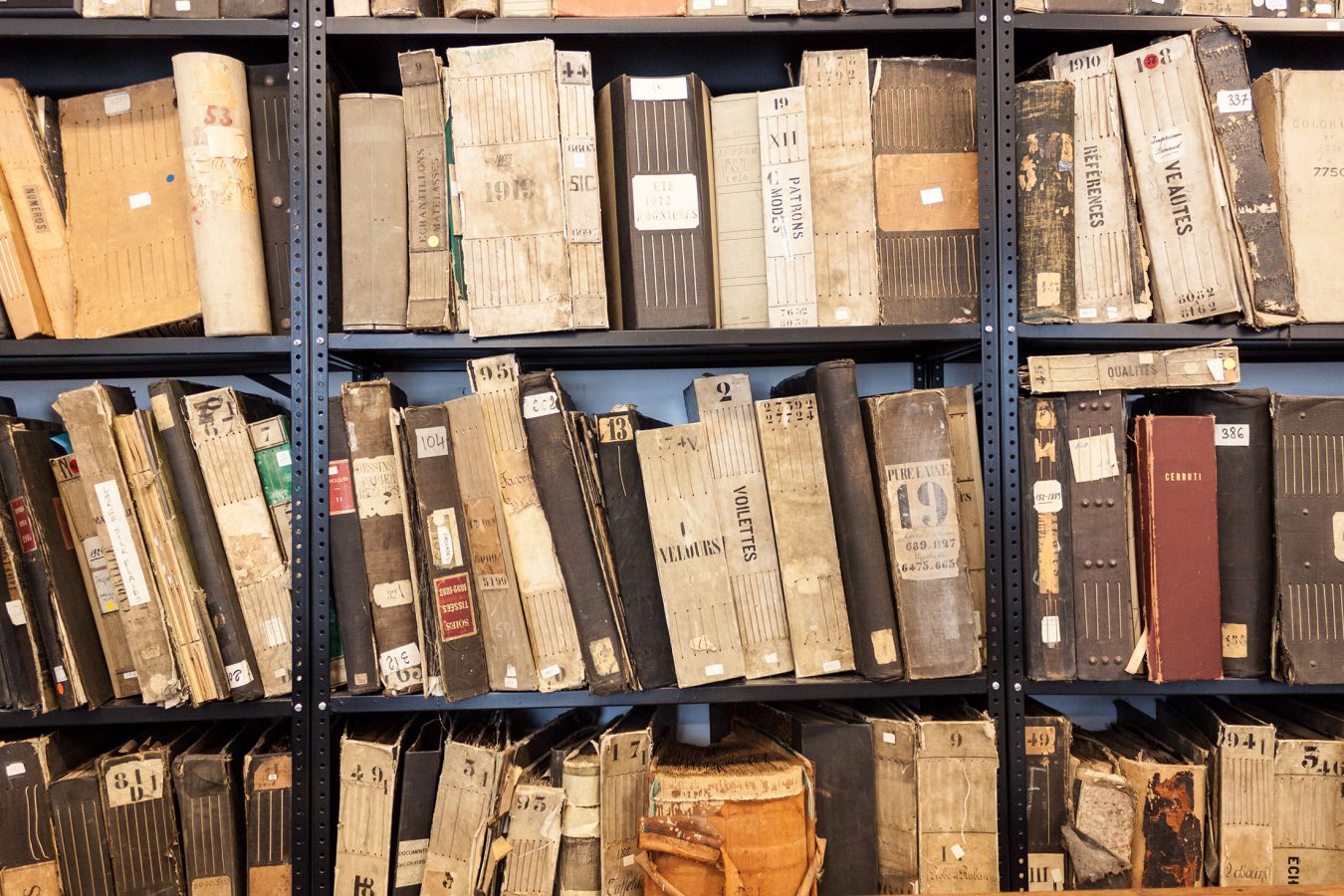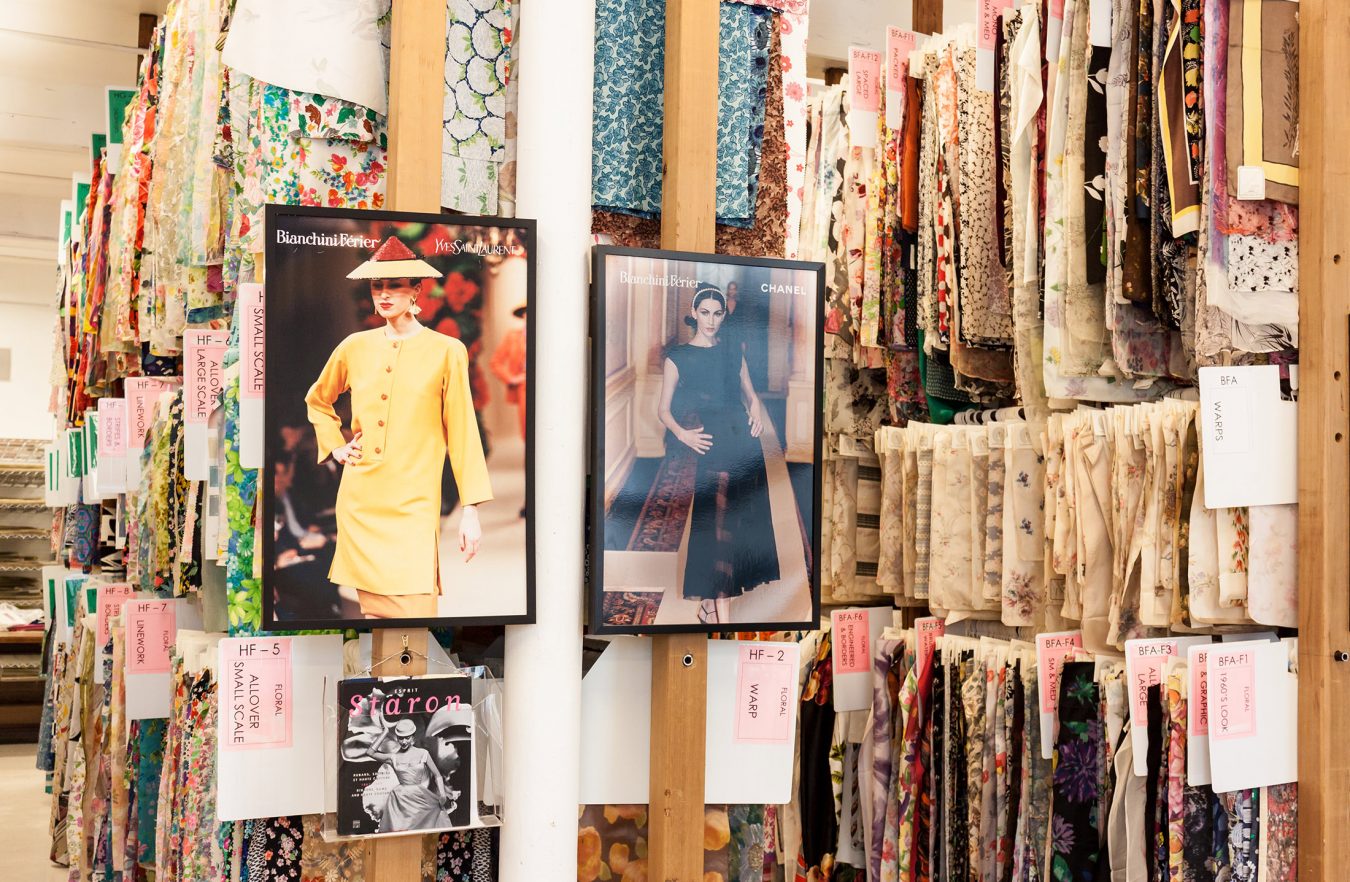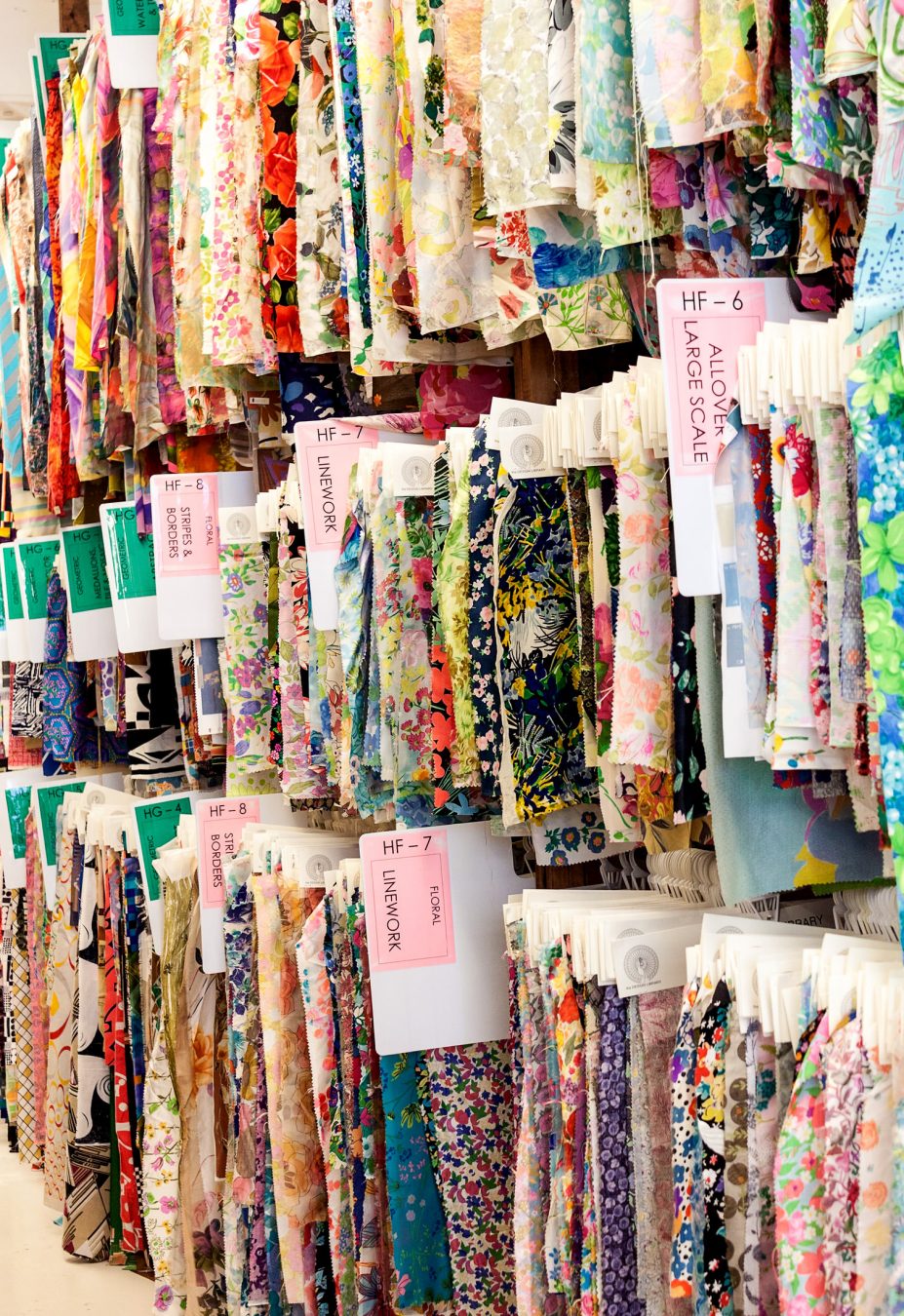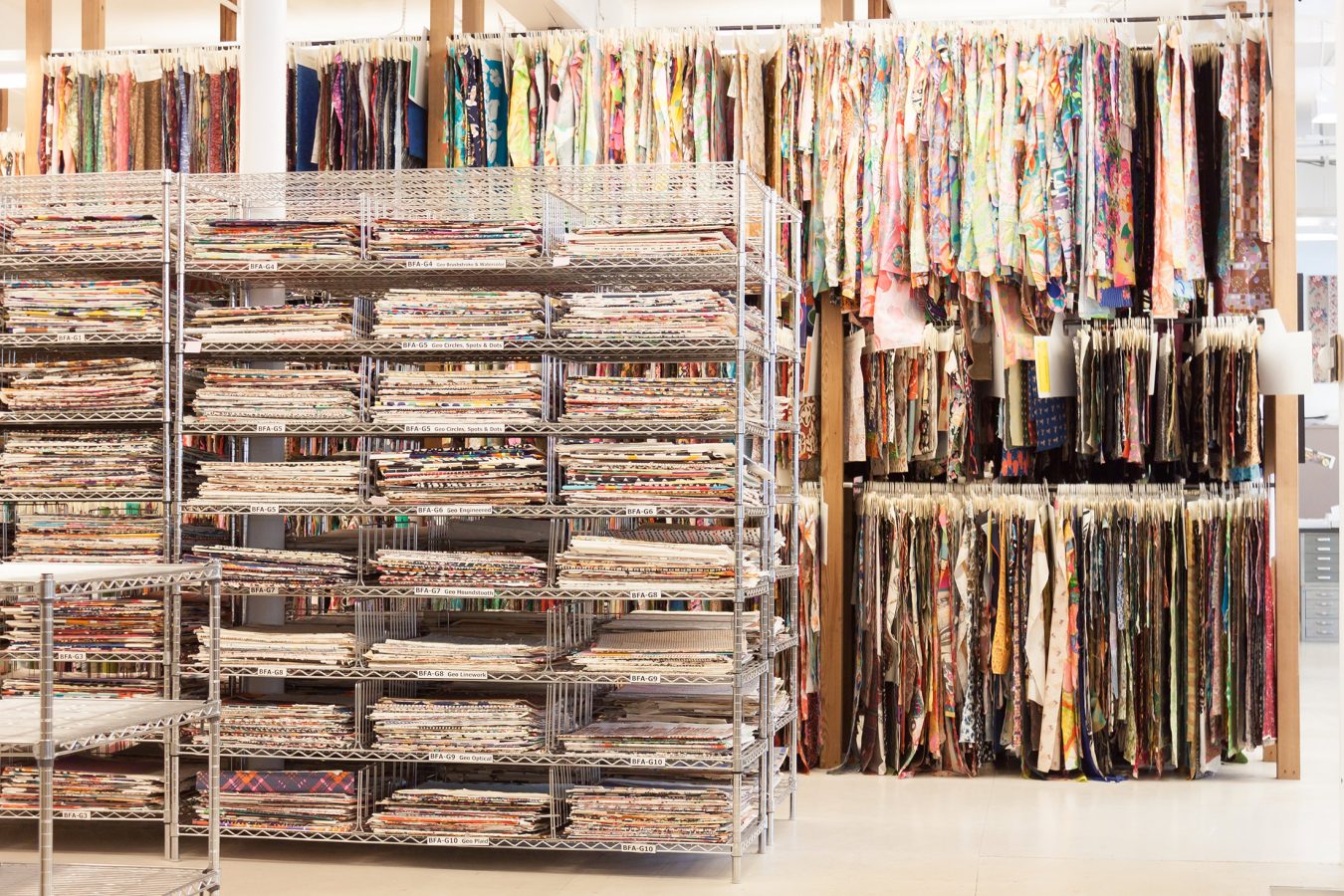Along the Hudson River, tucked away in a quiet corner of Wappingers Falls, New York, sits a converted 1907 fabric mill. As visitors walk through its doors, a world brimming with colour unravels in the all-white, 14,000-square-foot loft. Soaring ceilings and large windows allow natural light to stream in, and open metal shelves and industrial racks display neatly folded fabrics and original artwork from famous fashion houses. This is The Design Library, a textile haven exclusively for the professional designer, and the surface design industry’s best-kept secret.
This sanctuary carries one of the largest textile collections in the world: about seven million designs dating back to the 1750s, from delicate European lace and French jacquards to colourful South American tribal fabrics and 1970s bold geometric patterns. Here, printed cotton, raw silk, embroideries, and wallpaper converge in meticulously organized chaos. The industrial feel of the old mill space has been softened with kimonos and tapestries adorning the walls, as well as a floor-to-ceiling shelf filled with antique swatch books.

Over large wooden tables, a small group of designers sets out an array of samples, carefully evaluating form and texture. The quiet, intimate atmosphere is occasionally interrupted by somebody gasping at the marvel of unearthing a treasure. Because unlike at museums, here guests are encouraged to pull out the fabric pieces and original paintings, and even let out a little shriek of joy once in a while at the sight of a precious find. In fact, that is what the team at The Design Library enjoys most: the awe from designers who thought they had seen it all until they walked through these doors.
Peter Koepke, owner and director of The Design Library, outlines the history of the establishment from its origins 46 years ago, when author and fabric expert Susan Meller and her husband Herbert began collecting and classifying textiles from all over the world and then turned their passion into a business. By the late 1980s, The Design Library was headquartered in New York City and had become the premier source for inspiration.
Koepke’s own love for pattern began in his early twenties, when he travelled through South America collecting tribal pottery and fabric. Upon his return to the U.S., he worked for a decade as a private dealer of South American art. However, in the late 1980s, the political climate in Peru was no longer favourable for Koepke to continue travelling. It was time for a change. He started working at The Design Library and within a year was at the helm of the company. After five years, he began looking into moving the operation upstate, where they could afford more space to grow.
“There was a huge risk,” he recalls. “How could I still do the business if I’m this far from town? But then I thought, ‘If nobody comes, we’ll travel.’” Since it moved to its new location in 1998, travel has been a main principle for The Design Library: every season, the sales team visits designers all over North America, bringing a personalized selection of materials with them. And while this is a convenient solution, it is only half the experience, as there is nothing like seeing the entire collection under one roof.

In 2002, Koepke acquired the company from Susan Meller (Herbert died in the 1990s). His curatorial expertise and impeccable taste has made The Design Library a successful business in the sale and licensing of textile designs; while the original model mostly focused on materials from the 18th and 19th centuries, Koepke began to add collections from more contemporary design houses. “I think that, given the direction textile design has taken, that was my best move,” he muses. “Even the most traditional companies are doing new things, outstanding things inspired by 20th-century designs.”
Koepke opened an office in London in 2005, and it is home to 75,000 designs that rotate with the main Hudson Valley location. In 2013 he launched Kosmos, a subscription-based online model to facilitate licensing for clients all over the world; this was joined recently by Satellite, a non-subscription digital archive with non-exclusive licenses.
Each season, industry members make the pilgrimage to The Design Library. The experience is by appointment only, and open to just a few at a time. “Our mission,” says Koepke, “is completely different to a museum’s. A museum’s mission is to preserve, and ours is to get the design idea contained in the piece out into the world.” And while museums catalogue chronologically or by country, The Design Library classifies items like a designer would: by motif or layout. “We live for the professional designer,” says Koepke. “We are organized for them.”

The identity of these clients is a closely guarded secret, aside from the 10 brands that shared their case studies for Koepke’s Patterns: Inside The Design Library (Phaidon Press, 2016); in it, creatives from the likes of Lululemon and Nike reveal how they used the company. Among the finished creations was a lime green velvet dress, designed by Francisco Costa for Calvin Klein and worn by Michelle Obama to the 2009 Nobel Peace Prize ceremony that recognized her husband. “It came from two swatch pieces from here,” notes Koepke excitedly. Pottery Barn transformed an old wallpaper sample into colourful dishes and pillows, and Oscar de la Renta turned a large-scale black-and-white artwork into an embroidered gown. “In a way we are just providing a service from history,” Koepke says. “But the real magic, in my world, happens by the designer.”
This article from our archives was originally published on November 27, 2018. Find your inspiration in Style.









